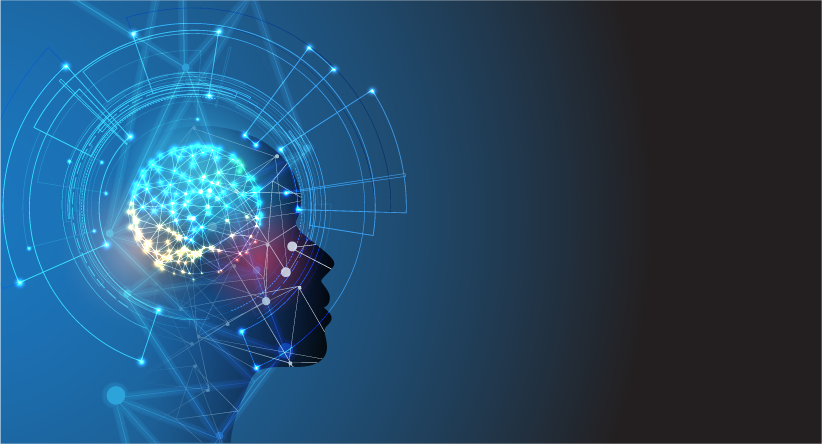‘Digital transformation’ and ‘automation’ are now common buzzwords used within the language of change. It’s an easy notion to think that the most successful route to positive evolution is walked by creating tech-based solutions that support the business objectives of cheaper, faster and easier.
However, while focusing on these outcomes that are driving day-to-day strategic decisions, it’s easy for us to forget that a major part of change is to maintain and enhance the experience of the people we interact with – people, rather than ‘users’.
I read a great line recently that said there are only two types of people who refer to customers and clients as users: digital agencies and drug dealers. In both instances, it’s dehumanising – and by losing sight of the human element by thinking of people merely as users, we create processes, systems and products that detract from the experience of those who we want to successfully use them.
Whether you’re looking to create simple, internal excel-based systems for yearly Performance and Development Reviews or a full software suite for customers to interact with, success and engagement depends on creating humanisation in the digital world.
What is humanisation?
Humanisation is the process of ensuring identified human needs remain part of our interactions.
The Humanising Care Toolkit (Todres et al, 2009) – born out of collaborative research between several universities and hospital trusts – first identified the eight dimensions of what it means to be human, and how these can be met in health and social care settings.
My Jump colleague Dave Hill and I in-turn adapted these to apply to digital systems, products and processes to create the 5 Pillars of Digital Humanisation.
Why is humanisation important?
As humans, we’re constantly trying to understand our experiences to assess if they ‘make sense’ to us – what psychologists call ‘sense-making’. When we assess an experience and deem it to make sense, we remain content. What doesn’t make sense conversely makes us feel unsettled and puts us on high alert, activating our fight or flight mode.
An example of this is when you walk into your house after a day at work – if everything is how you left it, or how you expect it to be, then you walk through to the kitchen or living room without wavering. If something is awry, however – like an unfamiliar sight or sound – we move into fight or flight mode and check for intruders or danger, as it doesn’t make sense.
This same form of sense-making happens every time we use a digital solution. The more humanised we make this experience, the more it makes sense to us and the happier and less threatened we feel.
In short, humanised systems make us feel like we belong and help us to have a positive experience.

The 5 Pillars of creating humanised digital solutions
Work out why, and who
Humanised systems solve a defined problem (why) for a defined group of people (who).
By having a strong why for the product, we can create a compelling narrative for people to buy-in to, which then affects their experience along their journey. Essentially, having a strong why helps the product make sense.
The who helps us to humanise according to that group’s needs – simple understandings like the level of digital literacy for people the system is aimed at will help us understand what they need to make it fit for them. For example, a product aimed at children will have a very different look, feel and navigation that a solution aimed at the elderly. This helps us ensure our solution makes sense and helps people, rather than hinders.
For more on defining your audience, see this piece on Design Thinking from a few weeks ago
Help, rather than hinder
Consciously or subconsciously, we’re constantly assessing if the systems we’re using are helping us or hindering us.
As humans, we need to feel like the systems we are using were created for people like us – as psychologists would put it, they need to feel relatable. Done right, this makes us feel like we are working with the system, and not against it.
The best solutions also provide people with a better experience than they previously received whether that be strategic (cheaper, faster or easier) or cultural (more valued, more enjoyable).
Allow for autonomy
Humanised systems ensure people are an active part of the process they are going through, rather than a passenger forced through a one-size-fits-all solution.
They do this by allowing for autonomy – giving people choices and decisions that affect their journey.
In practice, this can mean allowing people to write feedback within digital Personal Development Reviews, rather than just scoring things out of 10; or allowing people to skip past parts of a form they don’t believe applies to them.
Offering or denying autonomy essentially makes us feel like we’re being treated a human, rather than an object.
Create customisation
Customisation options allow people to build systems and applications that feel like their own, which reinforce our sense of being an individual.
As we customise our applications and systems, we satisfy our innate need for uniqueness and reinforce our sense of being treated as a human.
Big tech brands mastered this years ago – from your desktop wallpaper to the icon size, typography and tones, the world’s most valuable operating systems are built as completely customisable products.
Hone-in on home comforts
As we discussed earlier, familiarity helps us feel at ease and prevents us from moving into fight or flight mode.
Digital systems, therefore, need to feel familiar and play to our need for feeling ‘at home’.
We can do this by ensuring that internal systems meet our cultural expectations – dehumanised digital systems are cold in appearance and tone and feel ‘disconnected’ to our expectations, that are set by the culture and environment we’re used to operating in.
For example, you wouldn’t expect an app for a theme park to be a bland, black and white list of text – you’d expect it to be bright, bold with illustration and animations.
Meeting our expectations helps us feel at home – and helps people want to stay for longer.
The best, most successful systems make us feel like they are our home and going to another provider – leaving home – becomes a big obstacle: think of Apple versus Android or Sky versus Virgin Media. Making the brand jump is big because these systems have become part of our home.
Wrapping-up
Humanisation isn’t dictated by budget, it’s dictated by design.
One of the simplest, cheapest and most effective examples of a humanised digital system I came across was at a car servicing centre, where the attendant used an iPad to check your number plate against the list of bookings, allowing him to greet you by name when you stepped out the car, making you feel supremely special… and human!
There are some experiences that digital can’t yet elevate, which is why it’s important to note the key takeaway here: to meet both your business and cultural objectives: humanise your digital, but don’t digitise your human!

